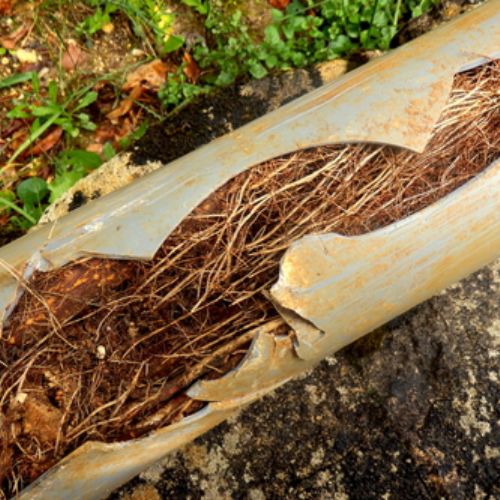Introduction
Picture a serene landscape, with majestic trees lining the streets and shading your property. Trees not only beautify our surroundings but also provide numerous benefits to the environment. However, as much as we appreciate their presence, there’s a hidden connection between tree roots and your drainage system that could potentially disrupt your property’s water management. In this blog post, we’ll delve into the intriguing relationship between tree roots and drainage, and explore ways to maintain harmony between these two vital components of your landscape.

The Dance between Tree Roots and Drainage
Trees play a crucial role in maintaining the ecosystem’s balance, absorbing excess rainwater and preventing soil erosion. However, as trees grow, their roots extend and explore, seeking water sources for sustenance. This is where the delicate dance between tree roots and drainage begins.
Over time, tree roots can infiltrate drainage pipes, causing a range of issues that affect the functionality of your drainage system. These issues include:
Clogs and Blockages: Tree roots can infiltrate and grow within drainage pipes, leading to clogs and blockages. This results in reduced water flow, potentially causing flooding and erosion during heavy rain events.
Pipe Damage: As roots expand and grow, they can exert pressure on drainage pipes, causing cracks and breaks. This structural damage not only disrupts drainage but also necessitates costly repairs.
Reduced Drainage Efficiency: Infiltrating roots can compromise the smooth flow of water through drainage pipes, leading to stagnant water accumulation. Stagnant water can become a breeding ground for pests and pose health risks.
Preserving Harmony: Tips for Managing Tree Roots and Drainage
While the coexistence of tree roots and drainage might seem challenging, there are several proactive measures you can take to maintain harmony:
Strategic Tree Planting: When planting trees, consider their mature size and proximity to drainage systems. Opt for trees with less aggressive root systems, or plant them farther away from pipes.
Root Barriers: Installing root barriers, made from materials like plastic or metal, can create a physical barrier that prevents tree roots from infiltrating drainage pipes.
Regular Maintenance: Schedule regular inspections of your drainage system to identify and address root intrusion early on. Professional maintenance can help prevent severe damage and keep your system functioning optimally.
Hydro Jetting: If root intrusion is already affecting your drainage system, hydro jetting can be an effective method to clear roots and debris from pipes, restoring proper water flow.
Consult Professionals: If you’re unsure about the impact of existing trees on your drainage system, consult with a certified arborist or a drainage specialist. They can offer tailored solutions based on your property’s unique characteristics.
Conclusion
The intricate interplay between tree roots and drainage systems underscores the need for a balanced approach to landscaping and property maintenance. Trees provide invaluable environmental benefits, but their growth can inadvertently disrupt drainage functionality. By implementing strategic planting, barriers, regular maintenance, and professional consultations, you can ensure that your trees and drainage system coexist harmoniously, contributing to both the beauty and functionality of your property.

